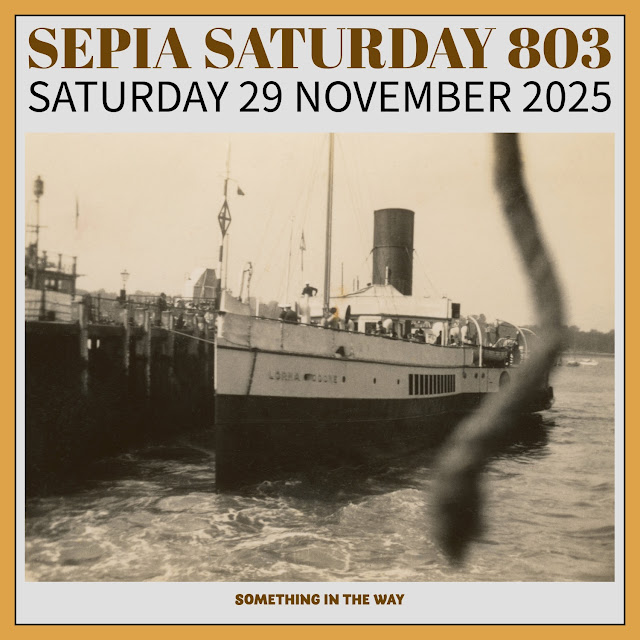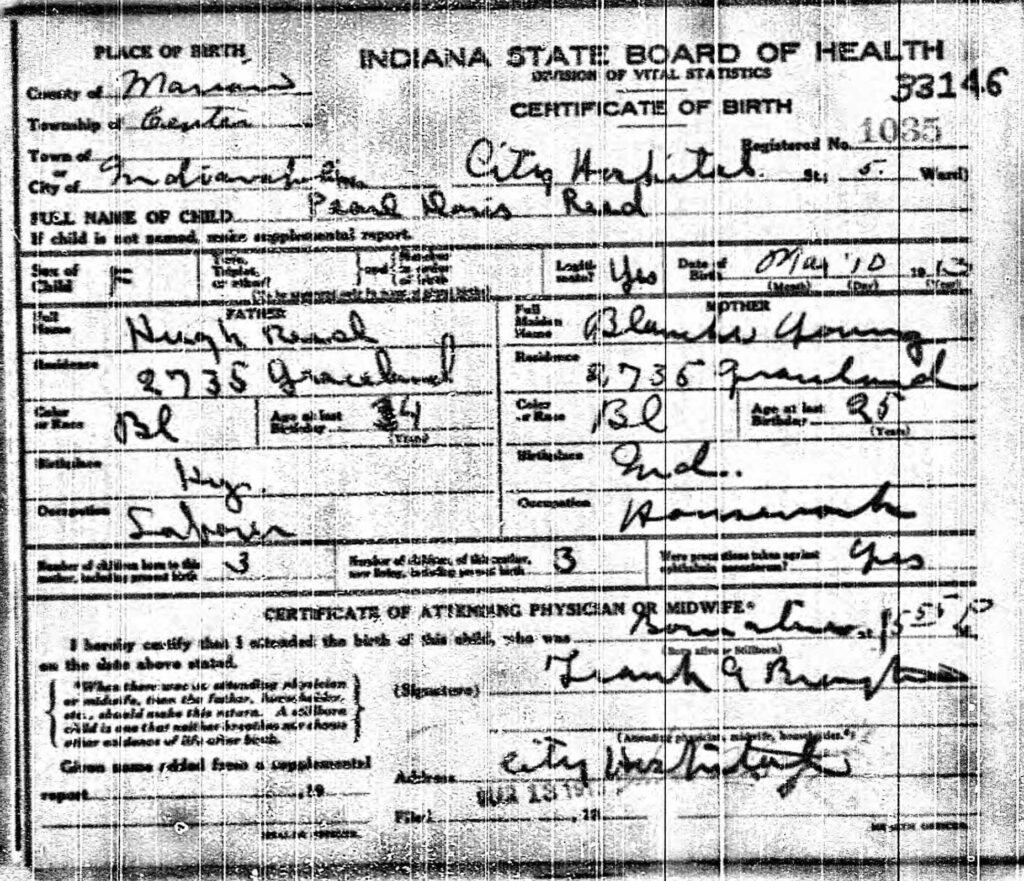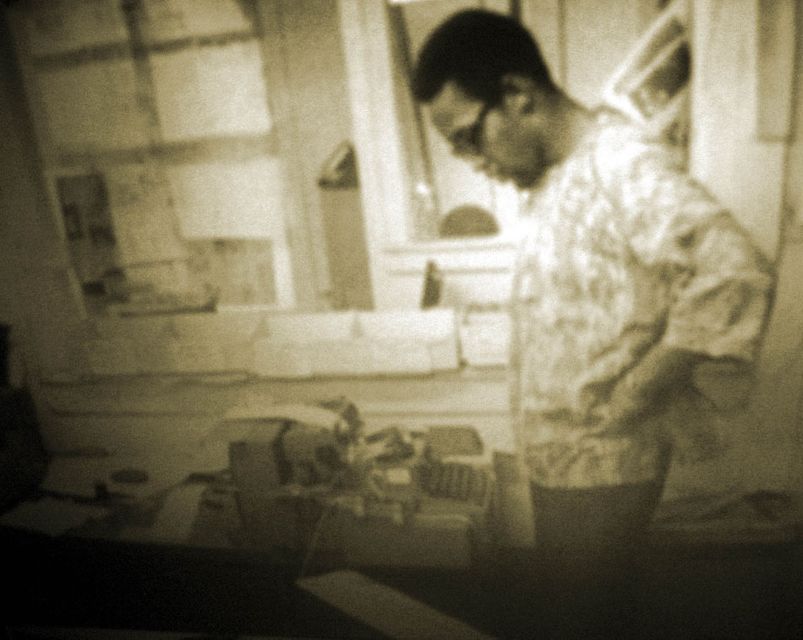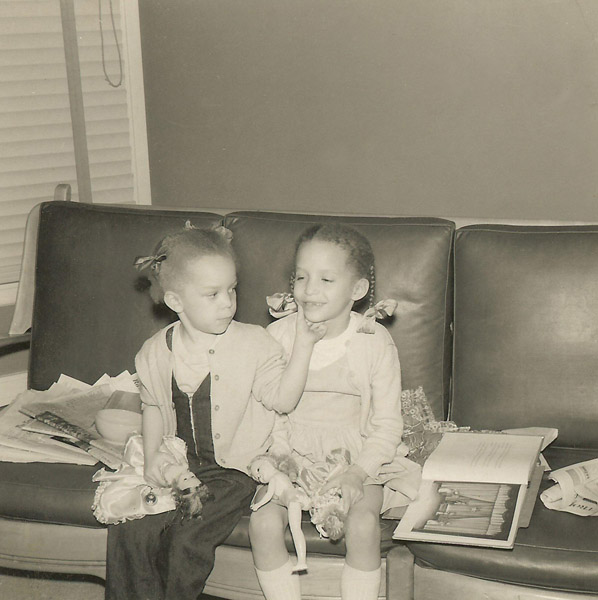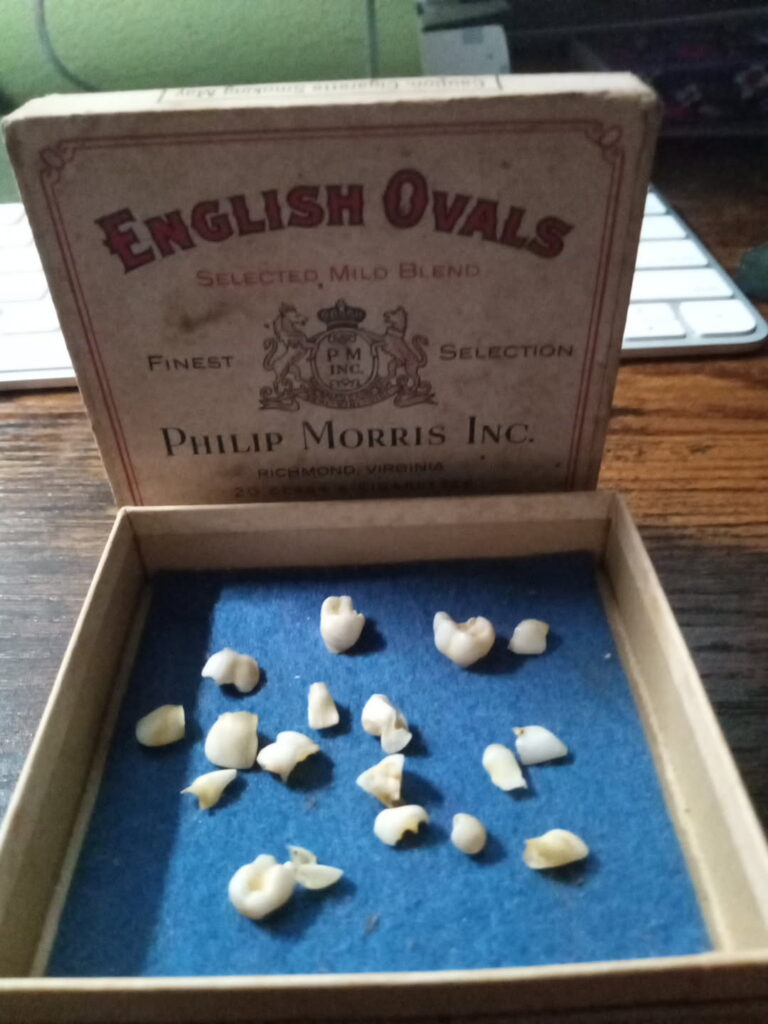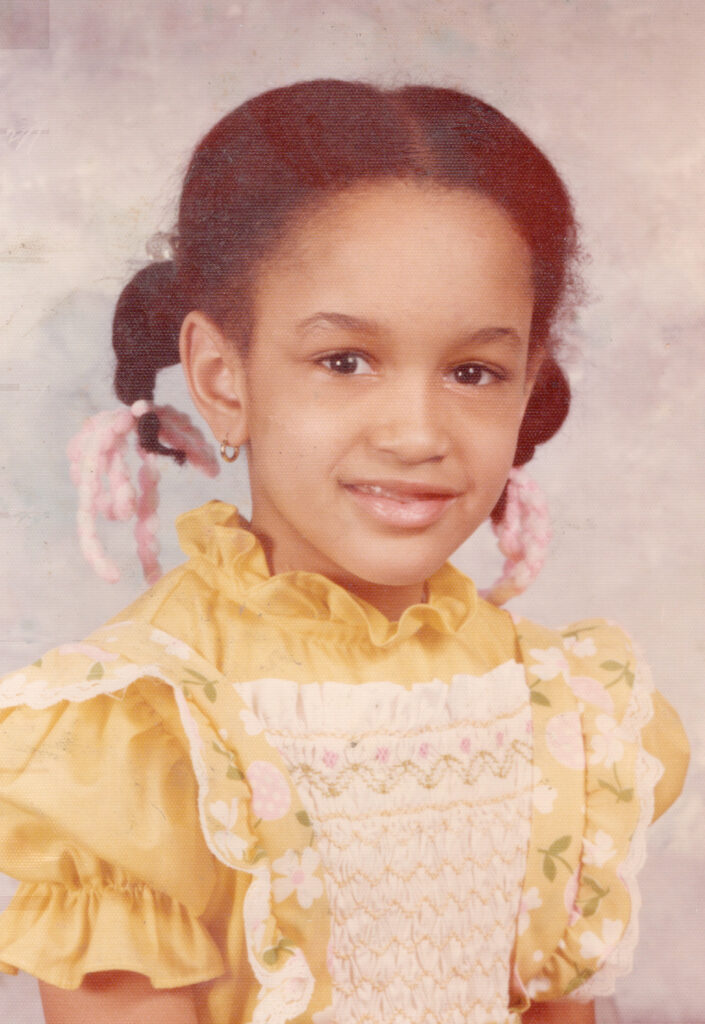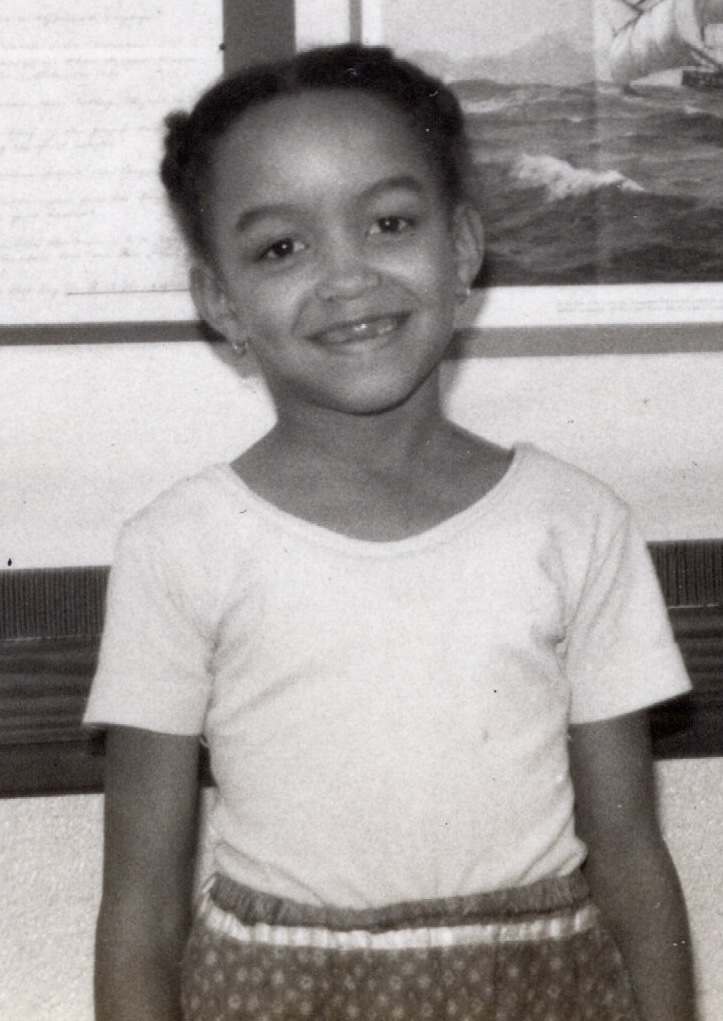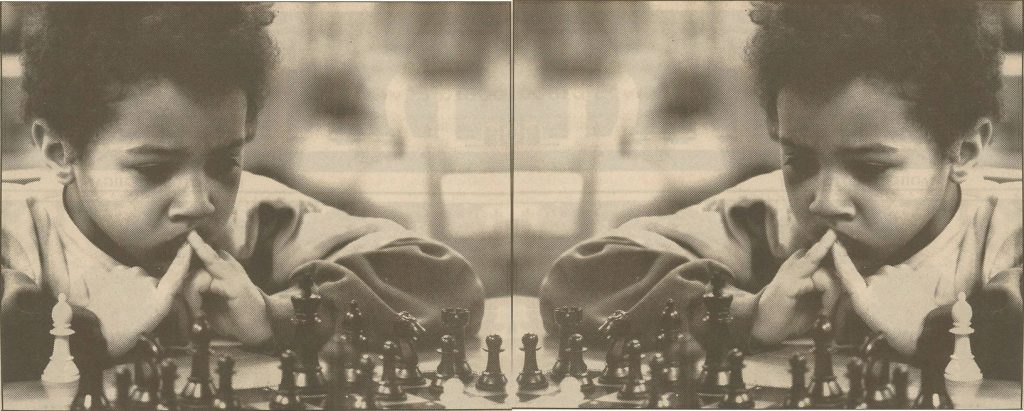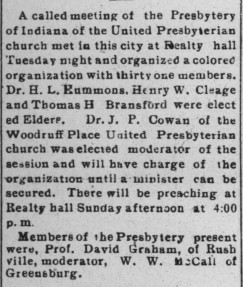Henry is taking me out on Lake Idlewild in the little sailboat. It was used to practice the skills needed to sail the big sailboat on the Detroit River. You can read about that boat here -> Sailing Log Detroit River – 1970
Thanksgiving 1963


It was Thanksgiving at my Graham Grandparents house in 1963, East side Detroit. My grandfather cuts the turkey. My mother sits on the right. I am on the left, my sister next to me. I wonder where my Aunt Mary Vee and my cousins were? Usually there were four more around the table. How we all fit I do not know, but we did. The house is gone now. Everybody in this photo except my sister and I are dead. We are older than my grandparents were.
Four generations gathered around dining room table in 1963 for Thanksgiving dinner. There was turkey with cornbread dressing cooked by my grandfather. There was white rice, cranberry jelly, green beans, corn pudding and sweet potatoes. There was my grandmother’s finely chopped green salad and her homemade biscuits with butter and with a relish plate holding olives, sweet pickles and carrot sticks.
One thing there wasn’t, was talk about the old days. My grandparents were born in 1888. My grandmother was born Fannie Turner in Lowndes County, Alabama. My grandfather was born Mershell Graham in Elmore County, Alabama. They met and married in Montgomery. My great great Aunt Abbie was born in 1877 in Montgomery, Alabama and was the second to youngest child of Dock and Eliza Allen.
Unfortunately, I can’t go back to 1963 and sit around the table and steer the conversation around to who was where and when and how and why. Did they celebrate Thanksgiving growing up? What did they have for dinner? Who was there? I’d ask Poppy, where he was in 1900? Where were his parents? and what happened to his older brothers? I wish I could hear them tell their stories tomorrow.
Other Thanksgiving Posts
Nov. 28, 1905 – The Last Letter – An Invitation to Thanksgiving Dinner
Thanksgiving 1939
“It’s Thanksgiving eve…” 1945
Thanksgiving 1949
Thanksgiving 1966 – Sermon
Thanksgiving – 1991, Idlewild, Michigan
Thanksgiving – 1991, Idlewild, Michigan – Part 2
Thanksgiving 2019
Zoo Trip 1959
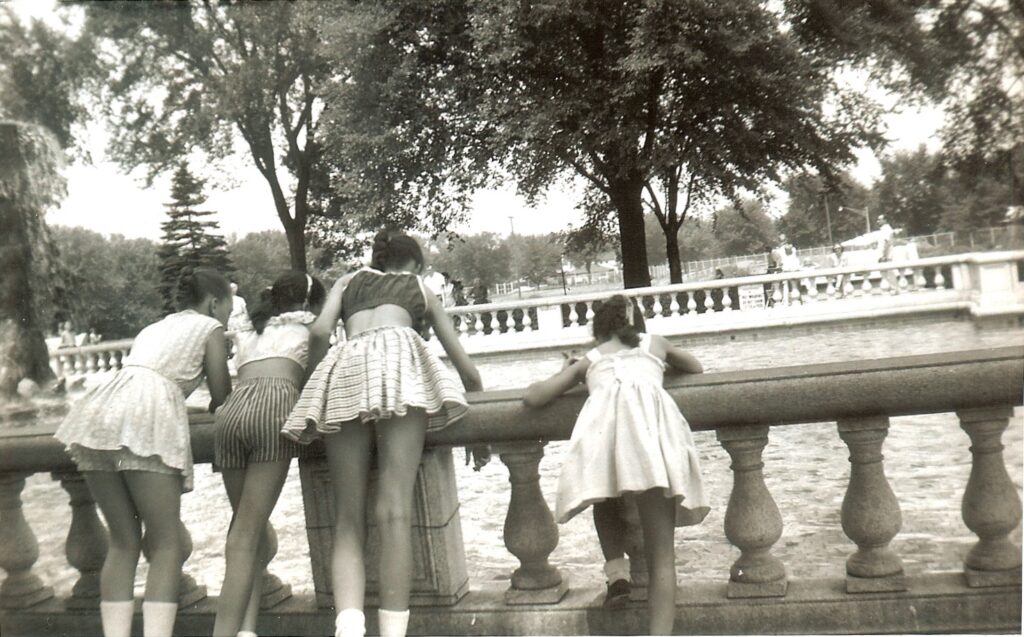
At the end of each summer my sister, cousins, mother, aunt and grandfather Poppy took a trip to the Detroit Zoo. We are looking at the Horace H. Rackham Memorial Fountain, located in the middle of the zoo. Every year we took photos there.
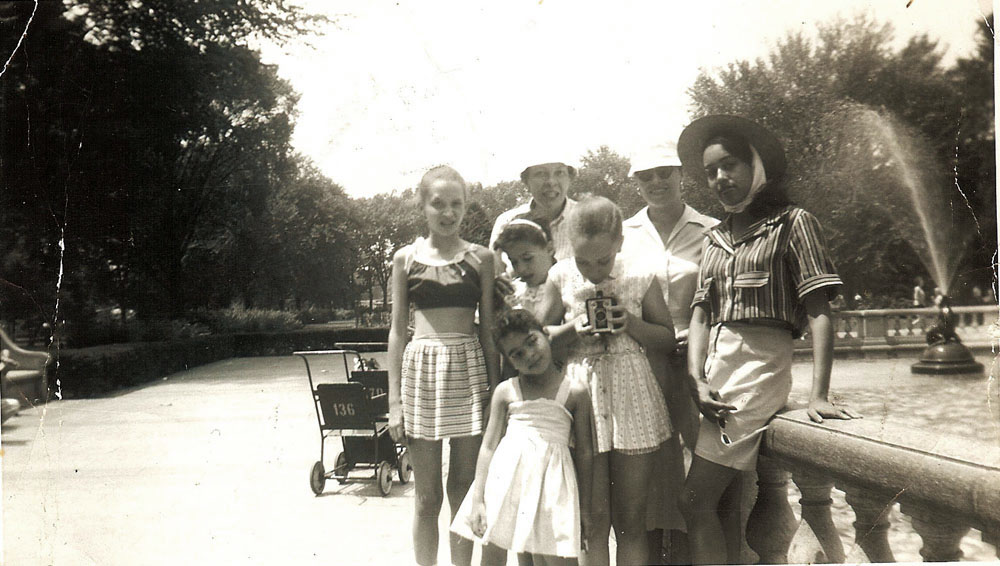
In 1959 Dee Dee was almost 17 and too cool. I’m amazed she still accompanied us to the zoo. It must have been a very important part of our year. I was almost 13 and not at all cool. That expression on my face is one I recognize from other photos through the years, unfortunately. I would say the sun is in my eyes but it doesn’t seem to be bothering anybody else. And why am I wearing that skimpy outfit? Connie and my mother are wearing the hats my mother bought for Pearl and me. White sailor hats were the rage for awhile. Unfortunately, these were the cheap version and did not look like the popular ones. I don’t think we ever wore them. If I had, maybe I wouldn’t have been squinting at the camera.
That summer of 1959 we moved from our rented flat on Calvert into our very own house on Oregon. I turned 13 on August 30 and started 8th grade at McMichael Junior High School that fall.

Other Detroit zoo posts
Our Yearly Trip to the Zoo
Jo Mendi
Marilyn Makes a Trunk – 1956
Blanche, Theresa and Thomas Averette
Although I haven’t participated in Sepia Saturday for a long time, when I saw the prompt for today I thought of the above photo, which I have never shared on Sepia Saturday and thought it was a good match. So, here I am.
When Hugh Reed’s second daughter was born, she was named after his baby sister, my grandmother. When I found the birth certificate online, I was surprised to find that the baby originally had my grandmother’s full name, Pearl Doris. Later, she was called Theresa Pearl. Did the parents decide on Theresa later because it sounded more “posh”? I will never know.
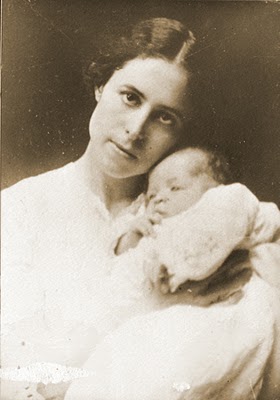
Memories of the 1967 Detroit Rebellion
Memories of the 1967 Detroit Riot
James E. Williams
I interviewed my husband, James E. Williams, about his memories of the Detroit riot of 1967. I edited out most of my questions in the transcription below for easier reading.
Hello, this is Akbar Lee, James Williams sitting here July 24, 2017 talking about the rebellion in Detroit, 1967, July 23. I don’t exactly recall how I first heard about it. I remember it was a Sunday morning. What I do remember is being with the Inner City Voice Newspaper. We had just gotten press cards, press passes from the Detroit police and myself and another person from the newspaper, were out on the street. It must have been about 10 o’clock Sunday morning. I had my press card in my hand, showed it to a policeman, I was on 12th street, about Blaine, near where the riot began. I was telling the photographer to take pictures (of what?) of the people in the street and the police in the street. They were milling around. The police came driving around in cars there was maybe 4 police in each car, would drive up 12th street and turn on one of the side streets and turn around
They went around and then they went around again there were about 3 or 4 cars. There were about 12 or 16 police. About 75 people. They were everywhere. I don’t think anybody was throwing bottles at the police. Stores had been broken into. I just remember people, men and women. So, the cops, they stopped, they jumped out of their cars with their clubs drawn running fast and started beating people that were watching.
One policeman came up toward me and I showed him my press pass, police press pass and he knocked it out of my hand and chased me up on a porch on Blaine, as I recall. And Maybe he knocked it out of my hand on 12th street and I ran, yeah to get away. He hit me in the head and knocked it out of my hand. I showed it to him and he knocked it out of my hand, hit me upside the head. I ran off the street. As a matter of fact, he brought it up to me and said, “This is yours.” I don’t know if it was the same policeman. I just ran up on the porch, the police were like on the adjacent street. They were just beating people back off the street. They wanted people off the street I assume and that’s what they got.
That’s my first memory, being beat off the street with my police pass that was worth nothing. It was an eye opener, so to speak. I expected they would back right down since the police chief had signed it. It was 1967 so I would be 22.
I was with another person from the inner city voice. Kurt Slaughter. He was also working with the newspaper. The Inner City Voice was a newspaper that hadn’t come out with its first issue, but it was getting ready to. We were gathering news, we thought. I don’t recall Kurt being hit. He had a camera because I thought I was telling him to take this picture, take that picture.
(Did he get a photo of you getting hit?) I never saw it. Kurt got away. I don’t remember much more after that day. Maybe I had a concussion.
Anyway, I was living at 1111 W. Canfield, Jefferies projects, in the student housing part of it. That was on the 23rd. I think that I was out on the street after getting hit in the head just observing people moving around. I don’t have much recollection of anything else, just the being beat in the head and my press card not being worth a damn.
Next thing I remember is the army coming, being in the streets. That was later in the week. And what I remember next is…. I think that what happened after being hit in the head I left the scene and didn’t go back. Went home, put ice on my head, tended my wound and had a fear of going back out there. However, what I can remember is, being a part… well, I had a feeling that this was something different, that people were fighting, that it was really going to be us against them, But it wasn’t real, my feeling. What I thought was us, the people rising up against the power of the police, was really the police using their power to push us back. There was burning, there was looting, but the police were still in control of the streets, so it seemed to me.
I remember at night laying in the bed thinking this is the revolution. I could hear gunshots tatatatatat it was quite an experience to live through. A lot of people didn’t make it through, 43 people were killed.
My fear was the police, getting shot, getting beat. I could hear those machine guns going at night. My neighbors didn’t have any machine guns. I must have been up and about during the daytime. The area where I lived on Wayne’s campus, I don’t remember a lot of police there. I had to go back up to 12th street, but the rioting was taking place in more places than just 12th street.
I remember somehow or another. I got the opportunity to go to Belle Isle where they had turned it into a temporary prison and interview some people that were being held. This was because I worked with a group of black social workers and they were going in to check the conditions of the people on Belle Isle because Belle Isle was not a prison but they had made it into a prison. We went inside buildings where the people were, in buildings. In my mind it was like a concentration camp, but I’m sure it wasn’t that bad, but for some reason, this was at night time too.
There was a curfew so I remember being in a police car driving down the street to wherever we were meeting, the meeting of the group of people they were going to select to go on Belle Isle and interview the people. (How did they pick you up? Were there other people in the car with you?) That’s not at all clear to me. I do remember being in a meeting with people and they were selecting us. And everybody didn’t get to go. They were asking questions like “What have you heard?” and some people were saying that people were being killed and they had been stuck in cages with monkeys and those people didn’t pick. Whoever those people were. I think it was the Justice Department but I’m not sure. I was caught up in the excitement of it all.
I don’t remember hardly anything because so much was happening, but anyway it went on for five days. It was almost like, they talked about after the soldiers got there, the army came, they were talking about going door to door to people’s houses and if they didn’t have recites for stuff in their house they were going be arrested and the stuff taken. It appeared there was nothing to stop the police from doing whatever they wanted. (Nobody keeps recites for everything). That’s true but it doesn’t matter if they come busting in your house and say this is looted. I know from my experience with my press pass. I do not believe that they did that and once they drank the bottle they felt pretty loose.
So, I lived on Canfield and Lodge Freeway. About the 3rd day I can remember going out to see what was happening. We were in the house trying to be protected from it. Not certain if Rosie was still there. Kathy would have been there. There were other people in the building that we knew, Edna, John Watson. Anyway, going out, I don’t really remember too clearly, just me going out. Milling in the crowd, a whole group of people taking stuff out of a store on Trumbull, which wasn’t very far. I can’t imagine this store that was selling this furniture but… The police were no place to be seen and people were just taking stuff and I got caught up in the moment and I got the table and put it in the front room and not really but probably in the back of my mind thinking of that beating. (Did you scratch it up?). No, no I probably polished it. The police never came. I never saw the police in the building.
The National Guard was there first and then the army came. They drove around everywhere. I don’t remember them going though the projects. Mostly I remember being out at night, going with observers. I don’t remember anything other then there was nobody out there but police. Whoever was the observers.
They had a zoo building on belle isle? And that’s where they were putting people. I don’t know what they did with those animals.
I don’t remember much else about the action part. Except for hearing the machine guns at night, hearing sirens all the time. I guess I wasn’t really out in it other than that first day when I got hit, and then when I got the table. I might have gone out one more day, but I think I was traumatized a bit about being out there with my police pass. So we just stayed in. I can’t really recall how I was communicating or who I was communicating with. The phones were working and I’m sure I was talking to people. The people I was working with on the newspaper, I eventually became pretty distant from them, but at the time we must have been going to the newspaper office which was on Warren, a little ways away, across the campus, to the other side of the campus. Once the newspaper became the organ of the League of Revolutionary Black Workers, the voice of today, it didn’t last long. Eventually the Algiers Motel Incident, but I think that came out after. What did happen, the inner city voice had worked out a speaking engagement for Rapp Brown with the local Friends of SNCC to bring Rapp Brown as a speaker, as a fundraiser for the newspaper. We had some problems with the location we ended up using the Dexter Theater, but I think we had tried to use some other spot first. How we ended up using the Dexter Theater. What I remember is that SNNC made off with the money, which they were known to do, I don’t know if the voice got any of that money. That probably happened a week later.
Related posts
My Detroit Rebellion Journal – 1967
Riot or Rebellion? July 23, 1967
Rebellions Create Strange Leaders – By Jaramogi Abebe Agyeman
“D” is for Dexter
Losing Teeth
This is the first of a series of posts comparing experiences across the generations,. Some milestones that may be covered will be losing teeth, learning to read, going to bed, waiting for holidays, school days and others that may be suggested by family members.
Today we share memories of losing teeth from family members ages six through 80.
________________
Jilo: Mommy did you have an active tooth fairy retrieving your teeth as a child? Did daddy?
Me: I did. She would take our teeth and leave a dime or maybe a quarter, along with a box of Jujyfruits or Good and Plenty. I was talking to Pearl about the tooth fairy and she said “I remember a quarter but no candy! I think the tooth fairy played favorites lol.” I’m sure I remember a little box of candy under my pillow. Maybe by the time Pearl was losing teeth, the tooth fairy had decided against leaving candy.
Ife: Mommy, the tooth fairy left you candy? That sounds like something done to keep those teeth coming.
Me: It does seem incongruous. But I’ve heard that the Tooth Fairy does like candy!
Me: Your father/grandfather remembers nothing about a tooth fairy or money or even losing teeth. Your uncle Michael remembers the tooth fairy and getting a dollar under his pillow.
_____________
I used to save all of my children’s teeth. Didn’t someone find them? I still have them and they are so small!
__________________
Tulani: I don’t remember losing any teeth, but I do remember getting 50 cents from the tooth fairy and putting teeth under my pillow. I also remember finding all the saved teeth in your jewelry box one time when Jilo banished me to your room for fighting with Ife or something, and I was looking through your jewelry box. I was older and don’t recall being disappointed.
No teeth under pillows for my children. And no money. Just the satisfaction of ripping a tooth out. Except Tatayana who worked the system and got whatever money Jilo was handing out.


Tatayana: I don’t think I ever believed in the tooth fairy, but I knew some of my cousins did so I’m pretty sure a few times when my teeth fell out I went to spend the night at Aunt Jilo’s because they got a few dollars there when their teeth fell out . I definitely used to push my teeth out. I also remember having Futch tie one of my teeth to dental floss and pull it out when I couldn’t get it out myself .
Matthew: “My very first loose tooth came out when I was eating spaghetti. I was sure it was blood, but it was just sauce! I don’t believe in the tooth fairy and don’t think I ever did. Big foot and tooth fairy same old same old. Just stories and not true. I collect my teeth and keep them in a box. Sometime I go back and look at them and remember how I lost them. “. I asked him his favorite tooth memory and he smiled a big smile and said, “that summer at the hotel when it was loose and dad tied it to a piece of dental floss to the door and slammed the door to yank it out. The first two times I was scared and moved with the door, but the third time it worked!”
____________________


Me: As a continuing part of my losing teeth investigation, when Azaria and Aziya were here for my birthday celebration, I asked them if they put their teeth under their pillow and if they found any money in the morning. Aziya nodded. Azaria said that they did put their teeth under their pillows and they found $3 in the morning. She added that her mother didn’t have a tooth fairy when she was little, she had a tooth rat. Luckily I was able to ask Marsha and get her story.
Marsha: Lol…When I was little, I didn’t imagine the usual sparkly tooth fairy. Mine was a little rat dressed up as Abu from Aladdin. The night I placed my tooth under my pillow after watching Aladdin and I must’ve been half-asleep when I pictured Abu rat sneaking in to take my tooth. The next day I told my mom what I saw, and she thought it was so cute . So now my mom shares that story with Azaria and Aziya. Now it’s kind of become a sweet little family memory.
Me: When I asked Cabral if he remembered losing teeth and getting money under his pillow or anything, he replied kinda but not really. Tulani remembers when Cabral was about five he was sledding down the hill in front of the house and hit the fence post and lost a front tooth. He lost the other front tooth soon afterwards. They were out a long time.
_________________


Dear Tooth fairy Why did you not responde and come yesterday? How are you please write
Tyra: I didn’t have any change. After that, I started keeping a stock of Dollar Store trinkets. Maya lost a tooth in an apple at lunch and the tooth came home in a baggie of cracker crumbs. We thought the tooth was lost but the tooth fairy visited anyway. I found the baggie in her lunch box the next morning.
Tyra: I got silver coins, probably 50 cents? I left a dollar until i started leaving trinkets. I didn’t always have cash. And Maya didn’t always tell me she had a loose tooth. They liked the trinkets. Money was less gratifying. I needed to be fairy ready! The loose to lost process seemed to go pretty quickly with them. Two or three days. Olivia lost three teeth in one day. Once she got over the fear of pain, she pulled her own teeth.
___________________
Jilo: I didn’t aggressively try to get teeth to fall out but I wiggled them when they were loose. When the tooth came out, I put it under my pillow and the tooth fairy came, took the tooth and left money. I don’t remember how much, but I remember being excited and looking forward to it. Also trying to stay awake to see her come. I believed in the tooth fairy until the time I put a tooth under my pillow and it was still there in the morning. When I told mommy she said “Oh! With Ayanna being sick I didn’t get a chance to get your tooth last night.” I still haven’t recovered. I don’t think that she knew that I really believed the tooth fairy was real. I mean why wouldn’t the tooth fairy be real when the other fairies are out there doing fairy things. To be honest I don’t think I stopped believing, I just figure she had a group of helpers like any international business woman would.



Hasina: Can confirm that at the Tisdale house we had the tooth fairy! I did make mine fall out faster – my favorite technique was to wiggle the tooth until I could fit the tip of my tongue underneath it to then push up and pop the tooth out. I think we got a dollar per, in cash or coin form.
Abeo: I honestly don’t remember much about the tooth fairy or loosing teeth. But I did have to have a tooth pulled out at the dentist cause an adult tooth grew in fully and the baby tooth wasn’t even loose or wiggly. Still got a crooked bottom tooth to show for it
______________
Sydney: I second that, the Graham household also had the tooth fairy.


Sydney: I feel like a dollar sounds right or maybe even 25 cents per tooth I don’t remember. I did not push my teeth out. I would wait until it was hanging on by a literal thread and my mom would have to pull it while i was sleeping.
Ife: The Graham House did have a fairy. She brought $1 per tooth in quarters. Occasionally she missed a pickup, usually Sydney’s, and I would tell Sydney that she hadn’t come because Sydney hadn’t slept enough and she didn’t want to be seen. Then we would leave the tooth another night and she would eventually get it.
Sydney would not wiggle her teeth much, like she was afraid of having them come out and several times her gums would grow around the teeth to keep it from falling out and we had to go to the dentist to get them out. Extra healthy gums were to blame. I still have all the teeth in dated little ziplock bags in my bedside table. What does a mother do with the teeth after the fairy turns over possession?
Sean and Sydney also argued with me about the existence of the fairy when I finally told them she wasn’t real. They had evidence to prove she did.
Ayanna: @ife do you have enough to make a line of smiling mugs?
Ife: Ayanna , I will look, but I’m pretty sure they are such tiny teeth they might need to be shot glasses.
Abeo: I love that you still have Sean and Sydney’s lil teeth, ife!
___________________



Kylett: I don’t recall ever believing in the tooth fairy. I think Cecelia might have had the tradition of giving us a quarter or two if we lost a tooth. She just gave the coins directly to us. I don’t remember any associations with us going to sleep or finding it under our pillow. Unfortunately I think for at least two of my teeth, they came out while I was eating and I accidentally swallowed them. I can’t recall what happened with the other teeth, we might have just thrown them away.
___________________
James: Mumia remembers losing his first tooth at 4 years old. He let it come out at its own speed, not much pushing or rushing it. Once it was out, he thinks he got 5 dollars and 50 cents for it. At the time, he did believe that money came from the tooth fairy.
Ayanna: $5.50 for one tooth!
James: I remember losing an adult tooth when I was about 10. There was still part of the tooth left so the dentist put a filler on there. They said over time it would die and it would need to be pulled out, but so far so good. When I look at it, it’s shaped a bit differently, but it hasn’t given me any trouble. I remember losing another adult tooth at 15 or 16, when I was playing basketball in the street over by Reed’s house.
I don’t have much detail to my memories about losing my baby teeth. I am pretty sure we got 50 cents, but am not sure about the amount (vaguely remember that it was coins rather than paper though).
Ayanna: I remember nothing, really. I am sure we had visits from a nice tooth fairy or maybe I never lost any teeth? I still believe in the tooth fairy.
James: I agree with Ayanna. I heard stories about the tooth fairy leaving money when I was a kid, but I didn’t really believe in her – until I met her at a community festival earlier this year (apparently, she lives in Seattle).
Here is an article about her in the NYT, The Tooth Fairy Is Real. She’s a Dentist in Seattle.
_________________
James: Imani and I made plans to try and catch the tooth fairy in action for a couple of her teeth that were lost over here. No luck yet though. The plans were nothing too extravagant, just stacking a few toys by the window, so the tooth fairy would knock them down if she came in that way, and me saying I would check on her often once she fell asleep and snap a picture of the Fairy if I came in when she was switching the tooth.
“Imani says she does know about the tooth fairy. When she lost her last tooth she left a little doll bed and snack size bag of skittles out on her dresser for the Tooth Fairy. In the morning, the skittles were gone!!!”
James: I was like “Wow. I didn’t even know that the Tooth Fairy liked Candy.”
Imani smiled and responded, “Well, I guess now you know… ” she thought about it a few seconds then added, “all the skittles were gone so she definitely does like Candy!”
___________________
Other information about the Tooth Fairy . It turns out there is a well known Tooth Rat – “El Ratoncito Perez” who takes teeth and leaves something under the pillow in Spanish speaking countries! And La Petite Souris (The Little Mouse) who preforms tooth duties in France and French speaking Belgium.
Tooth Fairy
Lillian Brown introduces the modern Tooth Fairy 1908
Ratoncito Perez
A to Z REFLECTIONS
REFLECTIONS
This was my twelfth year doing the A to Z Challenge. When I did my first challenge in 2013, there were over 1,800 participants. This year there were 179. I didn’t notice a big change in the number of comments. In fact, I may have gotten a few more this year. I was especially happy to get comments from several of my family members!
This year for the A to Z Challenge I posted an event for each date involving someone in my family tree. I had all of my posts pre-written. I did a bit of editing on the last few right before they published because I had left them since I had so much time and then forgotten. After reading On This Day in April by CRGalvin, I decided that every day during April I would also pick a happening from my family history that happened on that date.
I enjoyed finding the daily items and was able to make some new connections in my ancestors lives. When I do the A to Z Challenge, I have to look at my information in a different way. I look at facts that I may not have paid much attention to and find connections previously ignored.
You will find a list of my posts from this year here -> A to Z Challenge 2025 – April Family Happenings. I noticed some people are breaking down how many posts they did for men and how many for women this month. I did 13 for women (including two for me) and ten for men. With the remaining three about the founding of Witherspoon United Presbyterian Church including both.
I visited and commented on a variety of blogs. I did not attempt to visit all of them. These are the blogs I visited and commented on most days.
Anne’s Family History: family members matching the alphabet – Anne Young
Atherton’s Magic Vapour: a murder mystery – Melanie Atherton
A Multitude of Musings: personal growth and self-improvement – Astrid
Black and White: Bittersweetness & Light – Anne E.G. Nydam
Bold + Queer Kin: Melissa
CRACKERBERRIES: Empathy – Barbie
The Curry Apple Orchard: The Swinging Sixties – Linda Curry
Earlier Years: On This Day in April – CR Galvin
Family history across the seas: Airports, Airstrips, Aircraft, and Airlines – Cassmob (Pauleeen Cass)
How would you know…:Nonlinear memoir – Andrew Wilson
JillBallAu: jottings, journeys, joy – Jill Ball
Joy’s Book Blog: Activism – Joy Weese Moll
Living the Dream: personal musings – Susanne Matthews
Madly-in-Verse: all about Sarees – Nilanjana Bose
Musings of a Middle-Aged Mom: based on travel through Egypt, Turkey, and Greece – Lisa
Tell Me Another | personal stories, creative non-fiction: Books she loves – Josna Rege
Tracking Down The Family: The Earl Grey Orphan Scheme – Jennifer Jones
Very Important Stuff Here: Characters – tiredhamster
Thanks to the team that organizes the A to Z Challenge, to my husband who proof reads my posts and catches problems and to all those who read my posts and comment.

Z – Zealously Founding A New Church

For this year’s A to Z Challenge, I will be posting an event for that date involving someone in my family tree. Of course it will also involve the letter of the day. It may be a birth, a death, a christening, a journal entry, a letter or a newspaper article. If the entry is a news item, it will be transcribed immediately below. Click on photographs to enlarge in another window.
___________
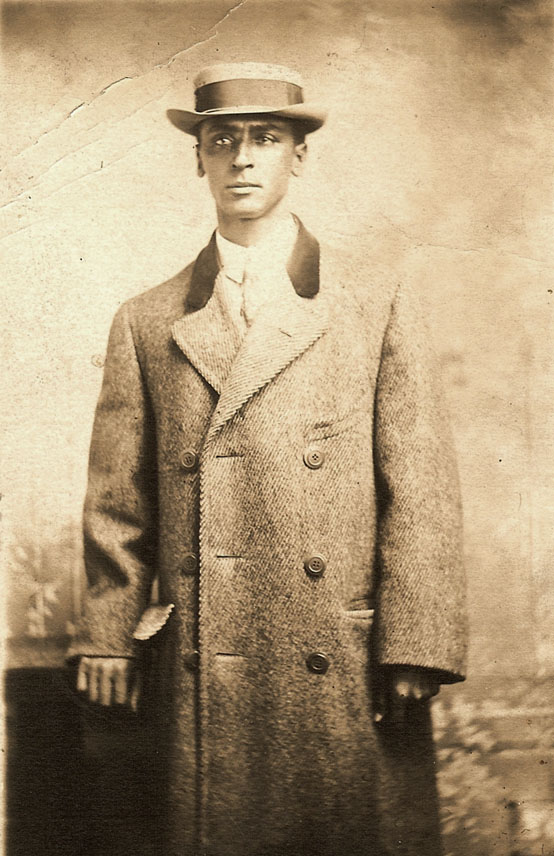
The Founding of Witherspoon United Presbyterian Church
Begins With 31 Members
Prof. David Graham of Rushville was moderator and Rev. W. W. McCall of Greensburg was secretary. Other members present were Rev. Fred W. Schmuch of Milroy, Rev. N. B. McClung of Vevay, Rev. Mr. McDill of Madison, and Dr. Cowan of Indianapolis.
The petition was discussed at some length. By unanimous vote an organization was decided upon. The 31 members who signed the petition were as follows: Henry W. Cleage, Mrs. Carrie Perkins, Mrs. Emma Moore, A. T. Roney, Mrs. Cora Donann, Mrs. Cathern Crenshaw, Mrs. Daisy L. Brabham, Albert Cleage, Mrs. Gertrude Cleage, James Myers, Mrs. A. L. McElrath, O. F. Dennis, Mrs. Hattie Mitchell, H. M. Mitchell, Mrs. Theresa Finley, Othello Finley, Miss Edith Finley, Miss Luell E. Hibbett, Mrs. Mary Peterson, Mrs. Anna Bowman, John T. Fox, Miss Pearl Reed, Thomas H. Bransford, Mrs. O. F. Dennis, Miss Alice Mathews, Miss Hilda Reeder, W. J. Perkins, Henry Moore and H. L. Hummons.
April 30, 1907 • Indianapolis, Marion, Indiana, USA
This is from a history of Witherspoon church that used to be on the church website, but no longer is there.
A called meeting of the Presbytery of Indiana of the United Presbyterian church met in this city at Realty hall Tuesday night and organized a colored organization with thirty one members. Dr. H. L. Hummons, Henry W. Cleage and Thomas H. Bransford were elected Elders. Dr. J. Pl Cowan of the Woodruff Place United Presbyterian church was elected moderator of the session and will have charge of the organization until a minister can be secured. There will be preaching at Realty hall Sunday afternoon at 4:00 p.m.
Members of the Presbytery present were Prof. David Graham, of Rushville, moderator, W. W. McCall of Greensburg.
_____________

I didn’t realize until I was working on this post that Henry W. Cleage’s two year old daughter died of broncho pneumonia one day after he was involved in the founding of Witherspoon United Presbyterian Church. Martha Christina Cleage had been born in Indianapolis, Indiana October 10, 1904. She was named for her maternal grandmother Martha Loving .
Henry’s wife Minnie Loving Cleage, died sometime after the daughter was born and before her death. The only evidence I have found of her in Indianapolis, aside from her daughter being born there, is an unclaimed letter in the post office in 1905.
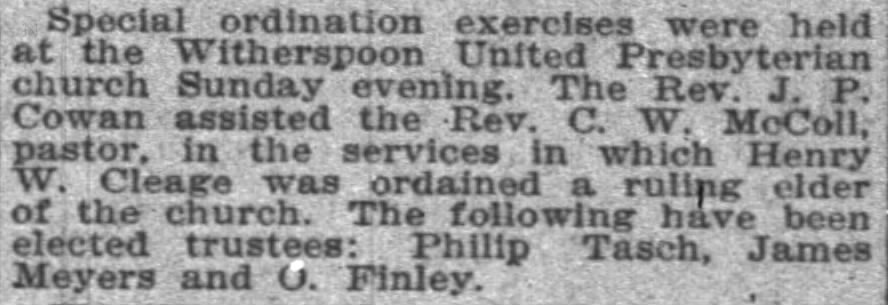
Special ordination exercises were held at the Witherspoon United Presbyterian church Sunday evening. The Rev. J. P. Cowan assisted the Rev. C. W. McCall, pastor, in the services in which Henry W. Cleage was ordained a ruling elder of the church. The following have been elected trustees: Philip Tasch, James Meyers and O. Finley.
Witherspoon History – Witherspoon Presbyterian Church webpage
H is for Henry William Cleage
H is for Henry Hummons
Y – Yearly Poetry Challenge Saves the Day

For this year’s A to Z Challenge I am posting an event involving someone in my family tree for that date. It may be a birth, a death, a christening, a journal entry, a letter or a newspaper article. If the entry is a news item, it will be transcribed immediately below. Click on photographs to enlarge in another window.
——————
I had a difficult time finding an item for April 29. My family seems to have skipped that date. Or perhaps just made no record of happenings. Then I remembered that for several years I have done the National/Global Poetry Writing Month along with the A to Z Challenge. There had to be some poems written on the 29th. There were. I chose the one below.
I almost forgot today's poem.
Lying in bed, writing
on my phone.
Still enough light to see the sky,
trees silhouetted.
The light from the
office reflects on the window.
I get up and snap
a photo.
Done.
Poem by Kristin Cleage April 29, 2023
X – Xeroxed Record
For this year’s A to Z Challenge, I will be posting an event for that date involving someone in my family tree. Of course it will also involve the letter of the day. It may be a birth, a death, a christening, a journal entry, a letter or a newspaper article. If the entry is a news item, it will be transcribed immediately below. Click on photographs to enlarge in another window.

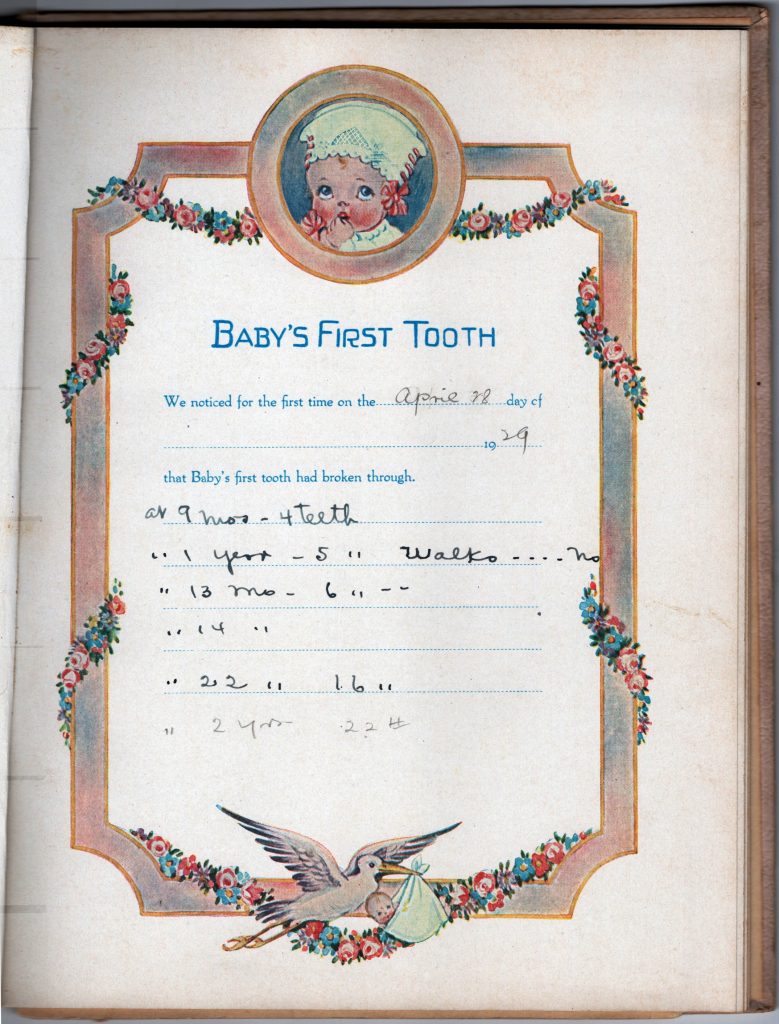
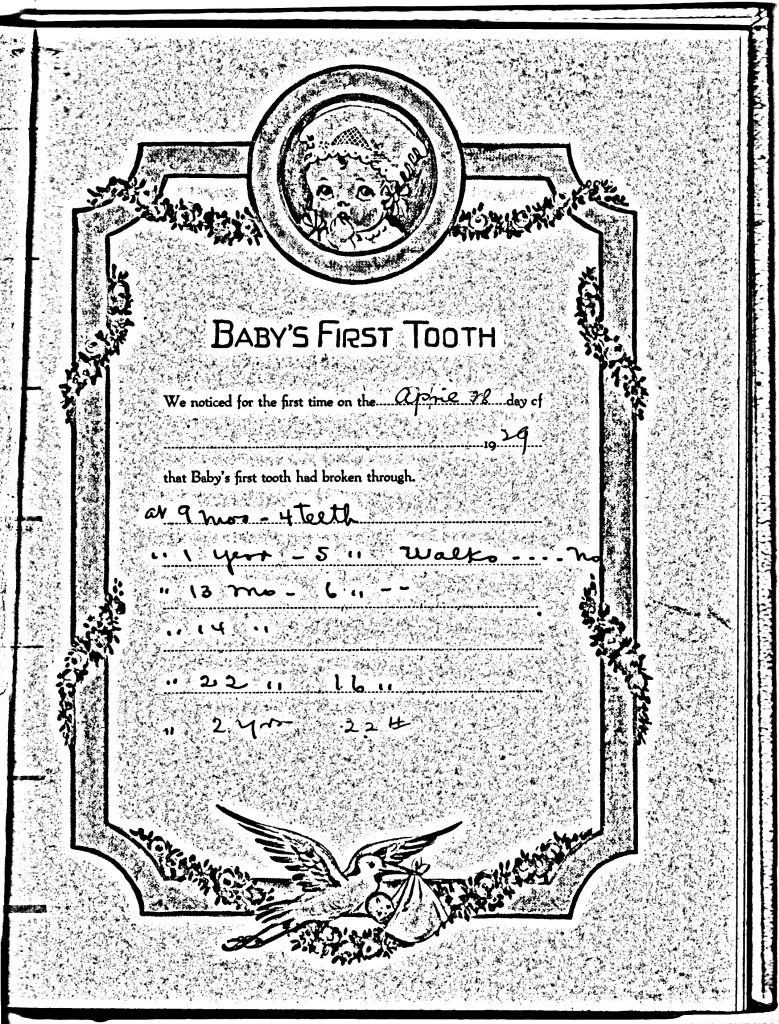
On April 28, 1929 Howard Graham’s first tooth appeared. Howard Alexander Graham was my mother’s youngest brother. He was named after my grandmother Fannie’s father, Howard Turner. Howard was born September 7, 1928, in the year following his older brother Mershell’s death by trauma after being run over by a truck on the way back to school. My grandparents felt that Howard had been sent to fill the space left by Mershell. Unfortunately he died of Scarlet Fever, exacerbated by Diabetes in 1932.
The only reason I have this xeroxed copy of a page from Howard’s baby book is that I needed an “X”. I had the tooth appearing on April 28, so I copied it and using the make-it-look-like a xerox function on my GIMP photo program, I made myself an “X” for the A to Z challenge.
________________________
Other posts about Howard Graham
N – NINETEEN TWENTY EIGHT Howard Graham was born
Baby’s First Photograph – 1929
Howard Alexander Graham Death Certificate – 1932


